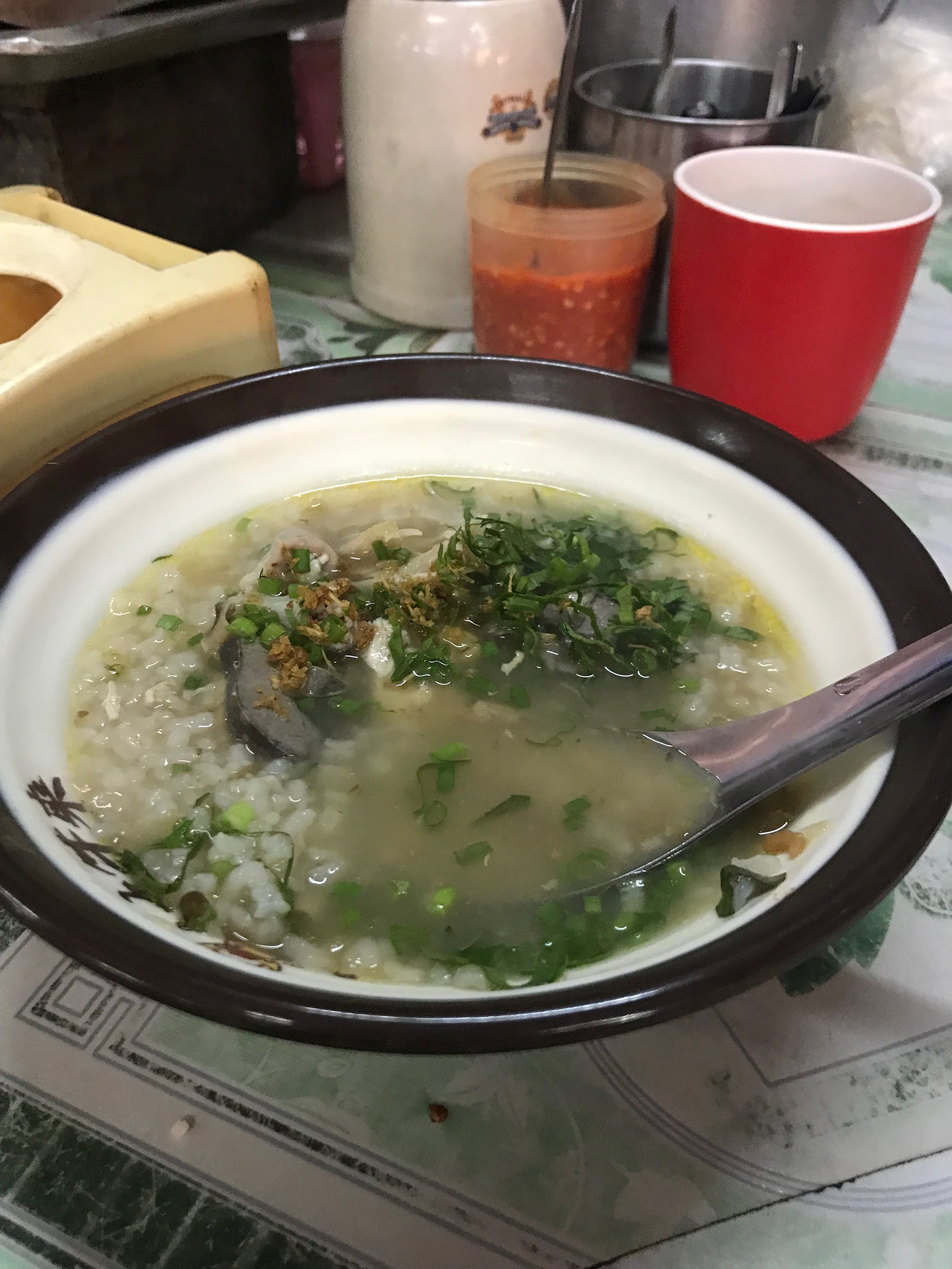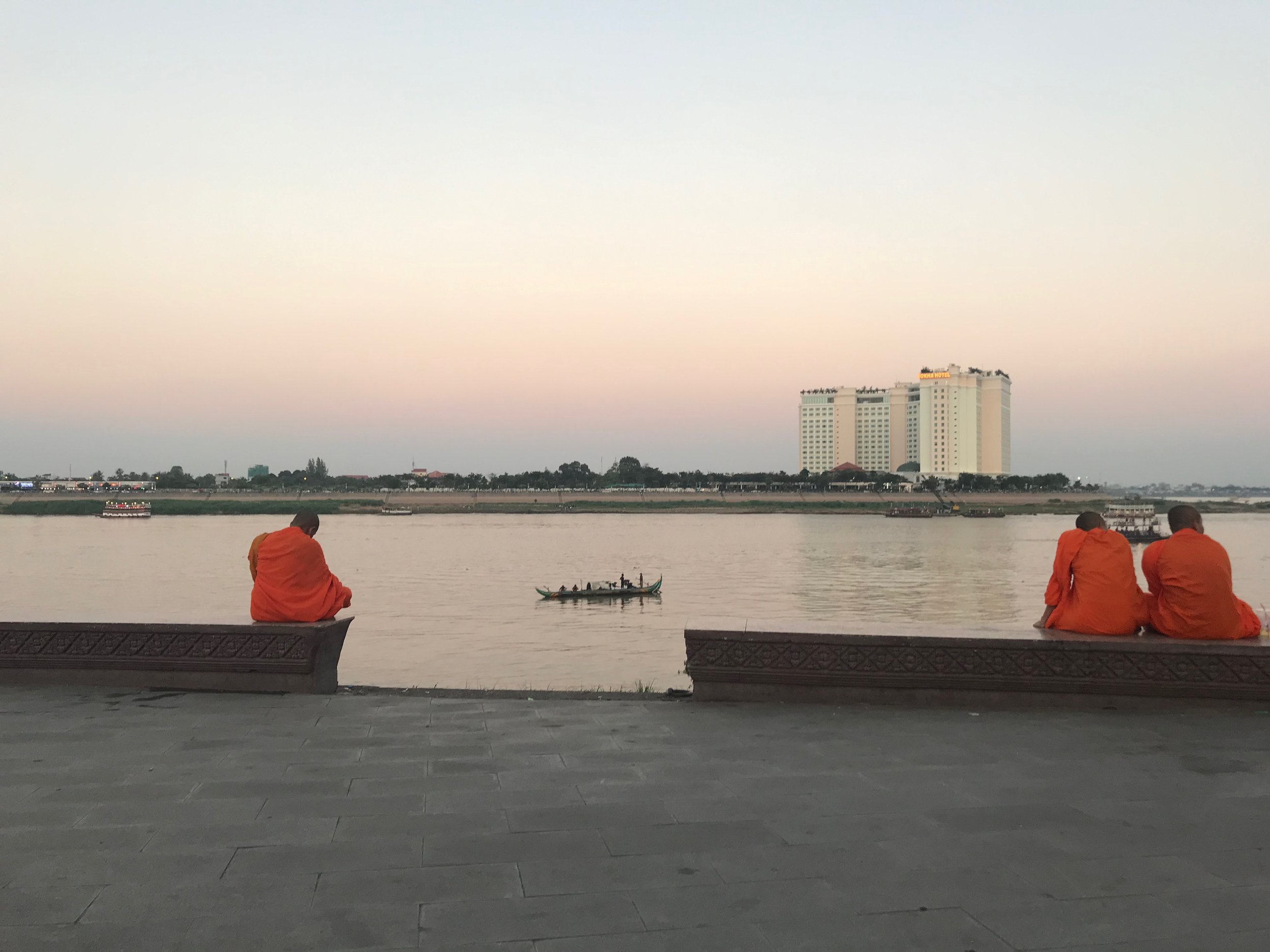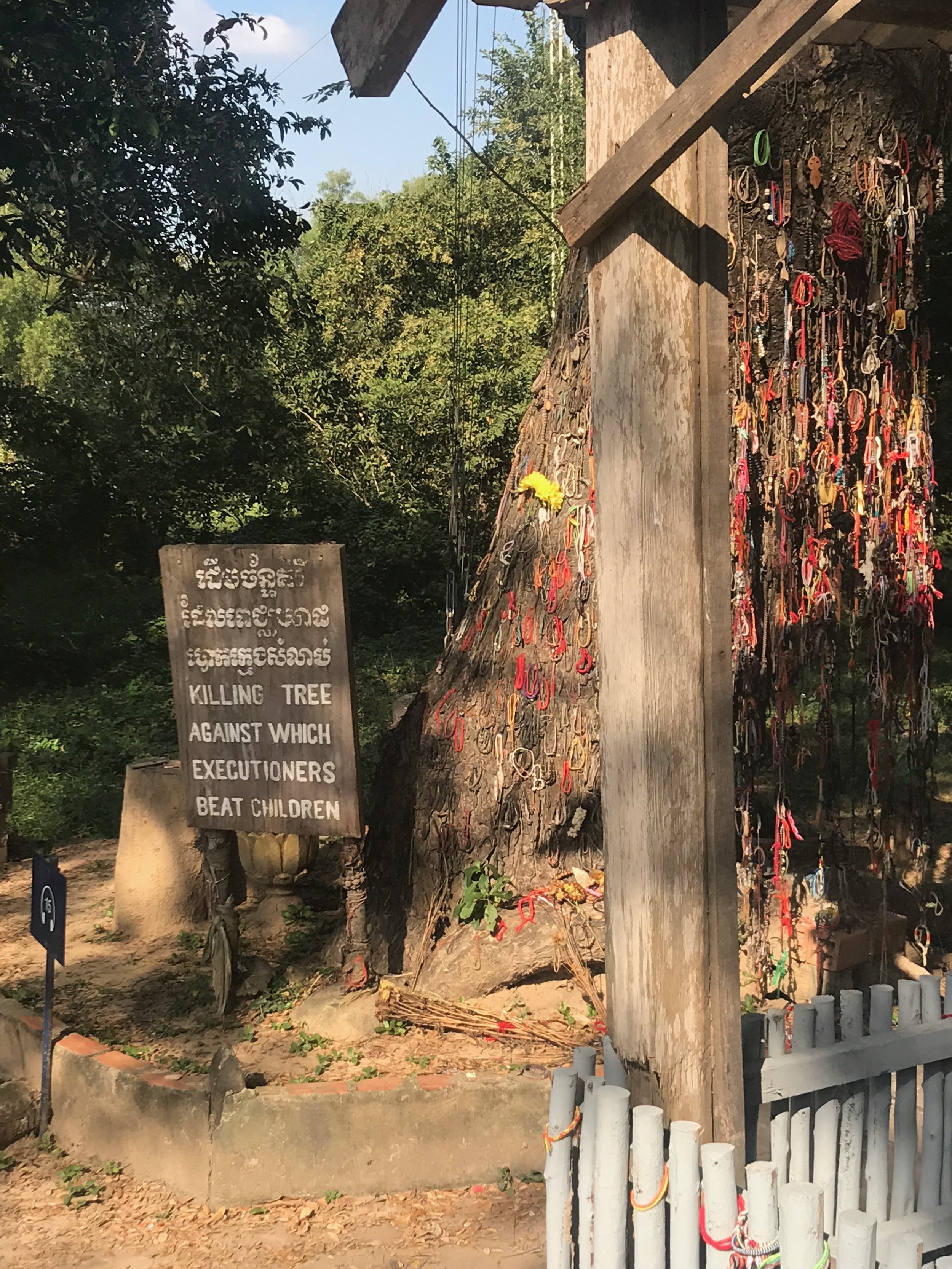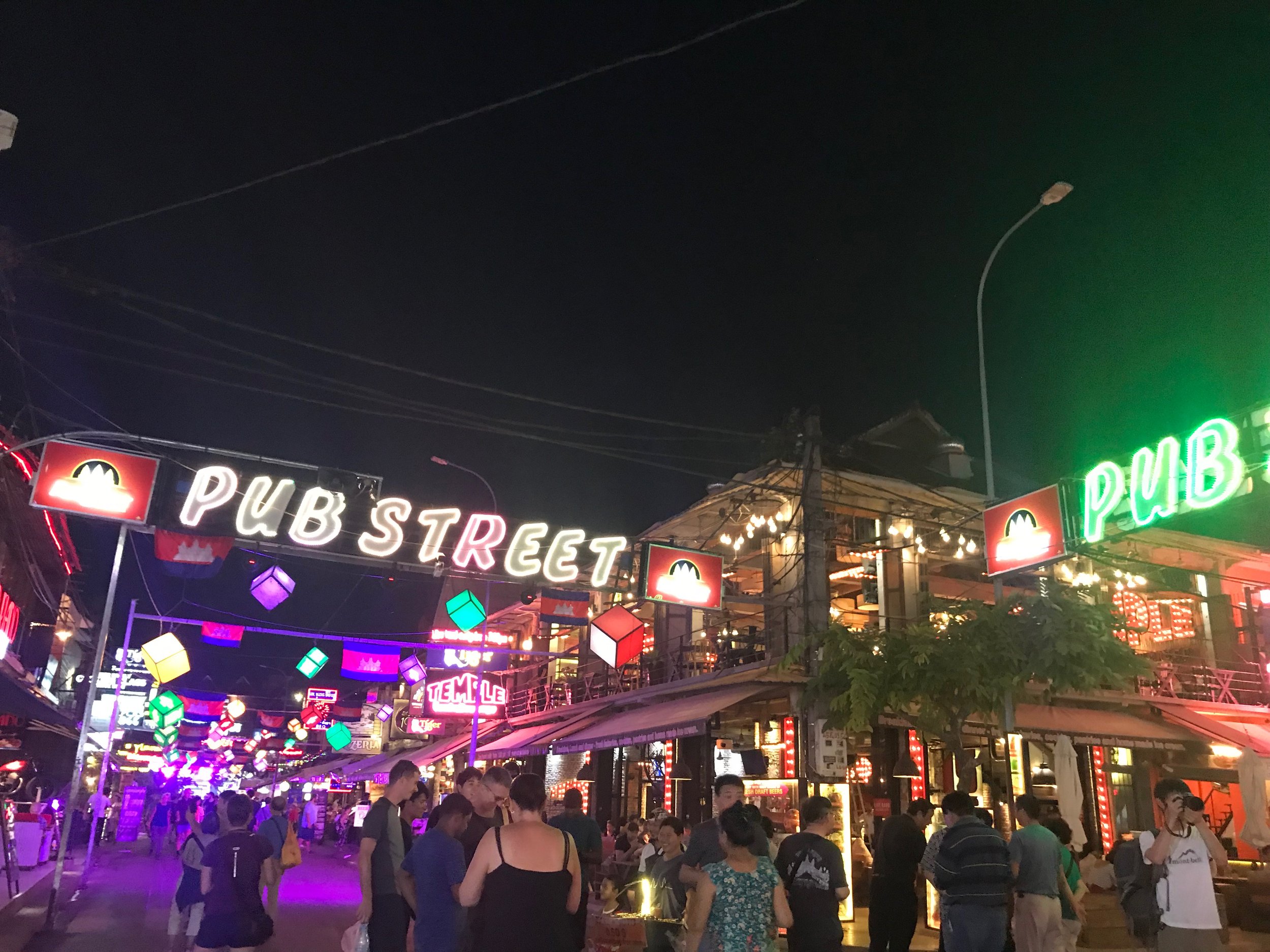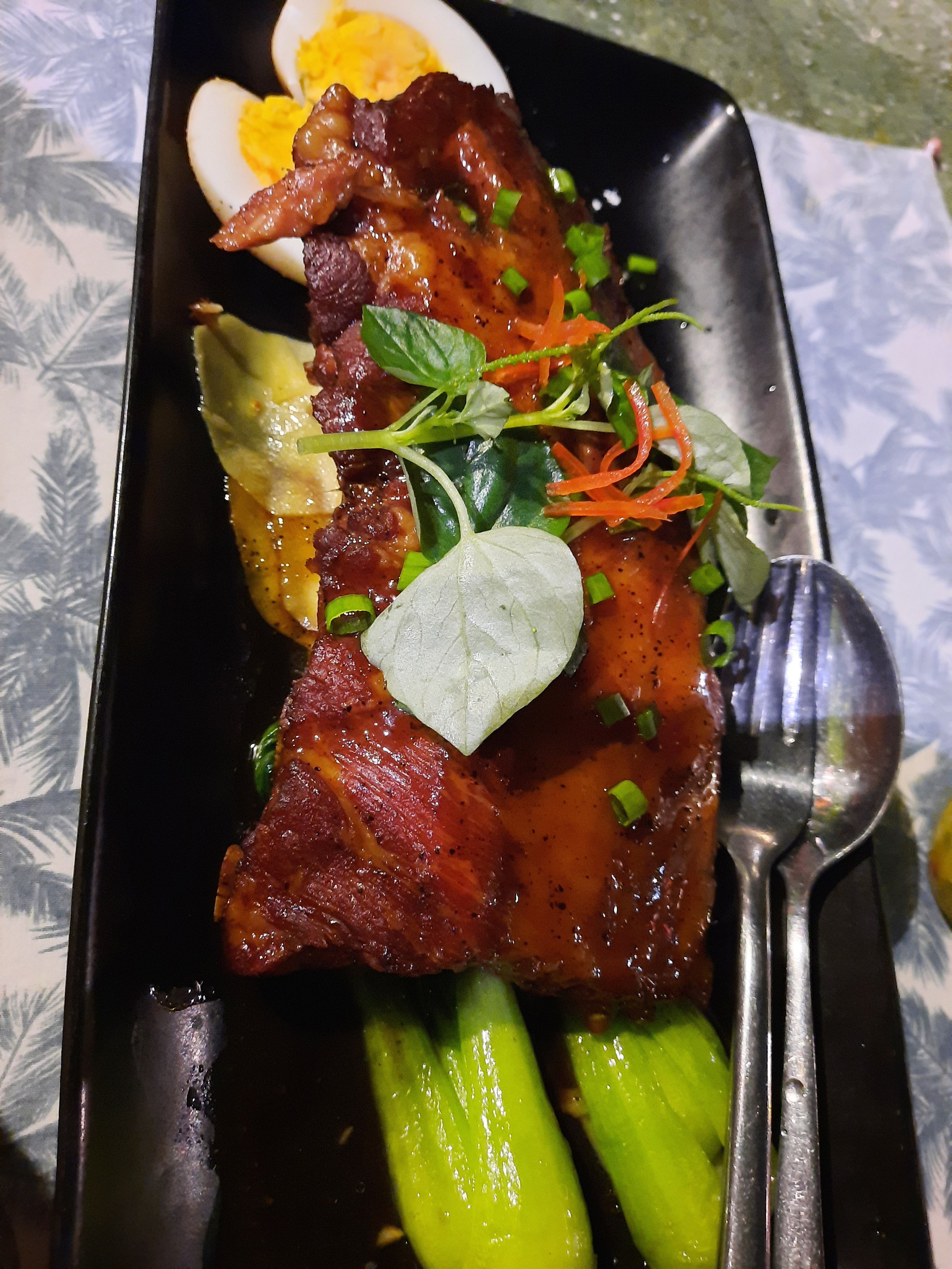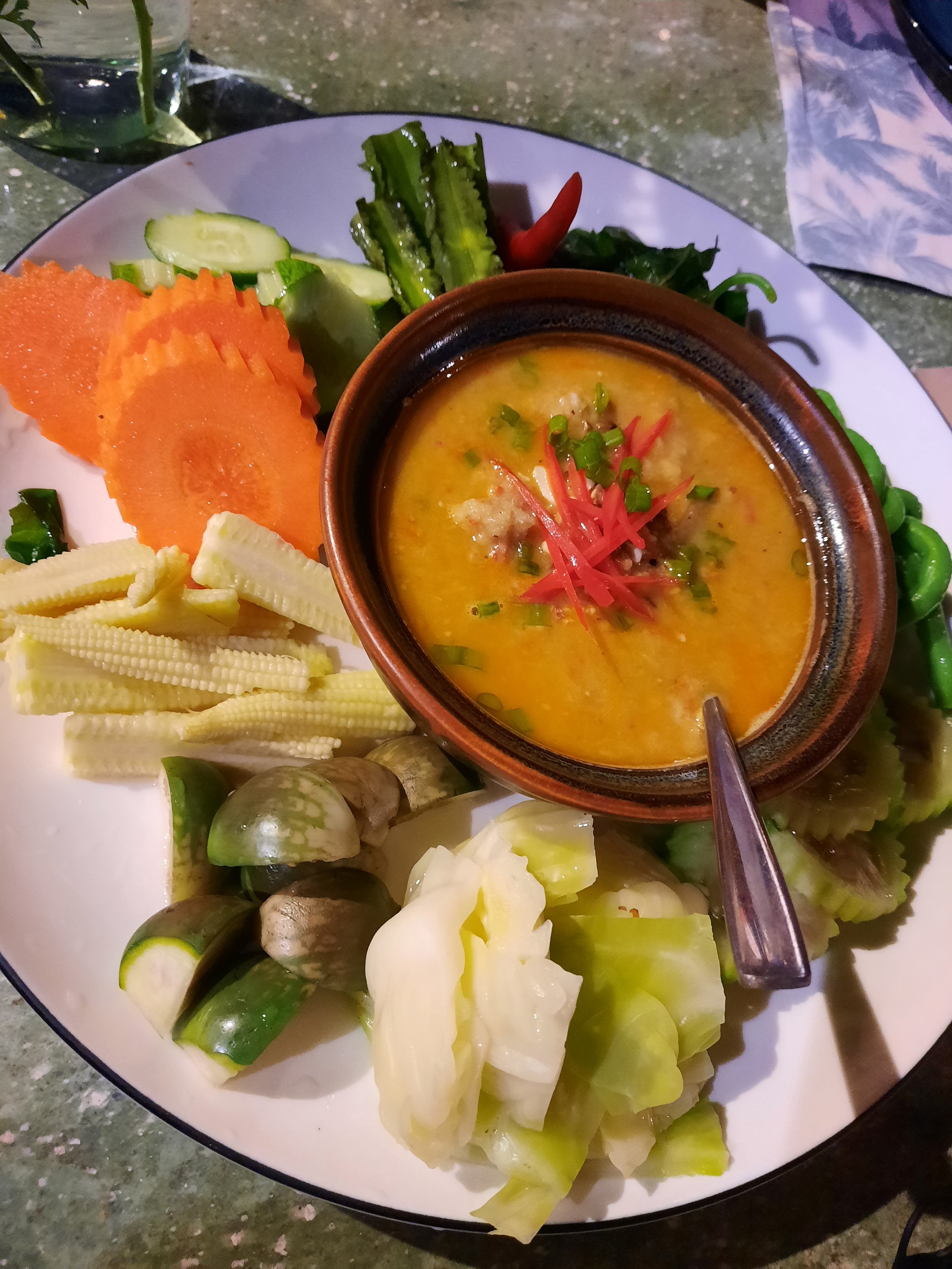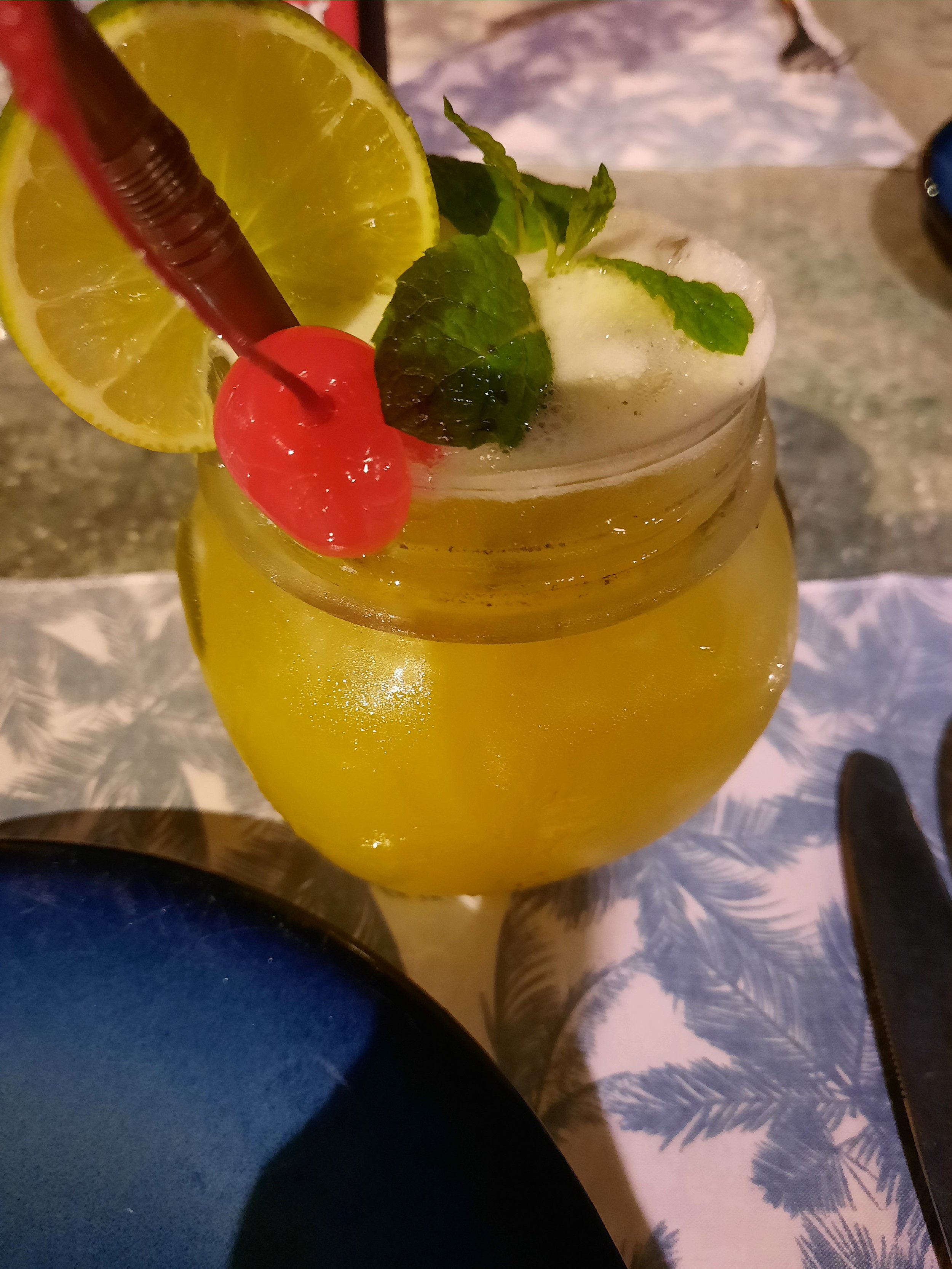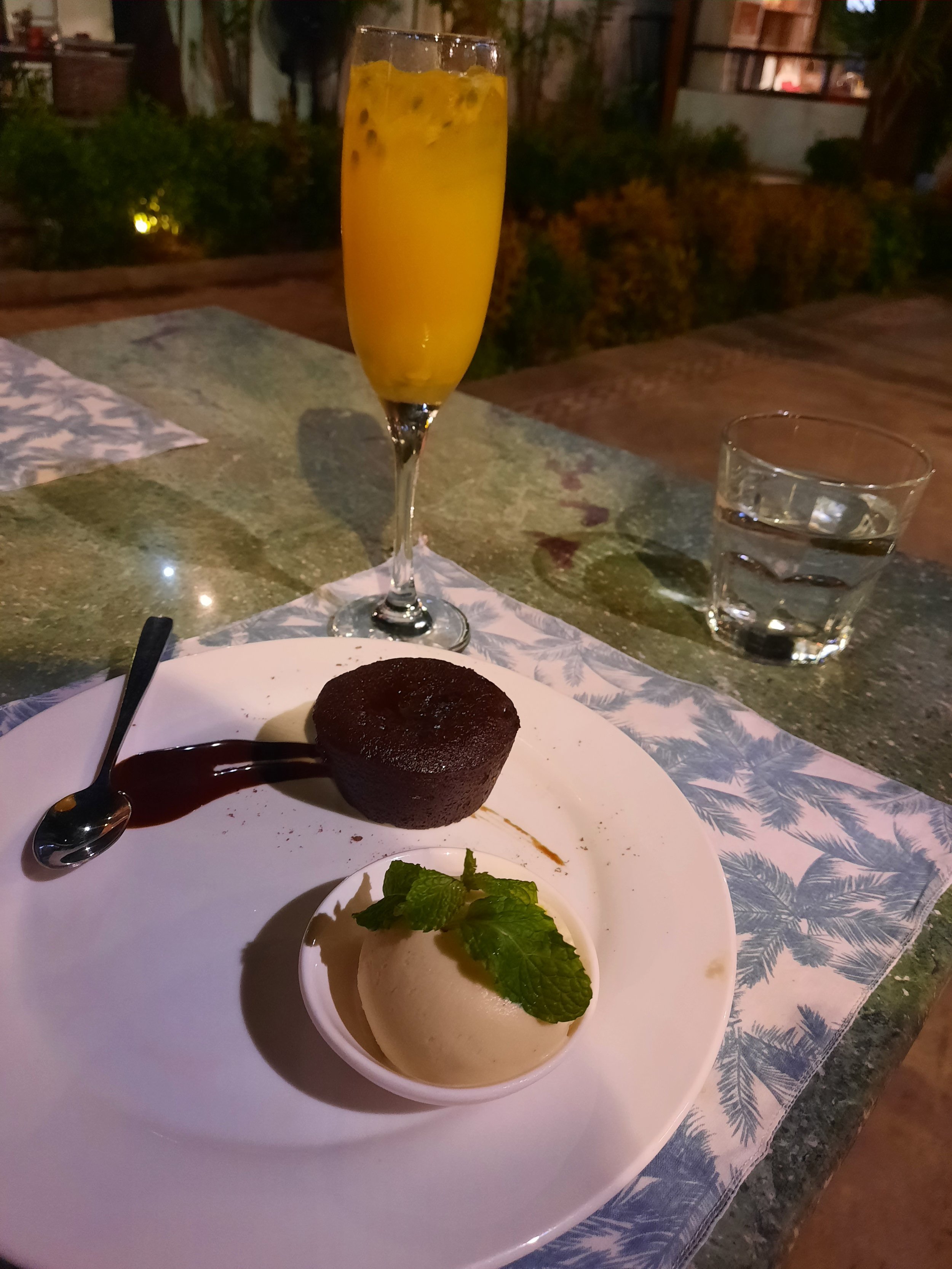5 Tales of Culinary Adventures Across Cambodia
Pre Rup temple, Siem Reap, Cambodia (2023)
Cambodian cuisine gets a bad rap.
When you think of great Southeast Asian food, you’re more likely to think of Thai, Vietnamese, Lao, Malaysian, and Indonesian fare than Cambodian.
And it’s not like it’s Cambodia’s fault: when an oppressive, genocidal regime takes control of your country for four years, destroys local agricultural traditions, and decimates a huge portion of your nation’s older population (you know—the women and men who would typically pass down their culinary knowledge to their children and grandchildren), the nation’s food culture will unfortunately never be the same. Blame Pol Pot and the Khmer Rouge for the fact that Cambodia’s culinary scene lacks the renown of its neighbors.
On my first trip to Southeast Asia, I visited Laos, Cambodia, and Vietnam—in that order—with a brief stop in Bangkok at the end of the trip (where, unfortunately, I spent most of the time violently ill; I’m still not entirely sure how I managed to make my flight home).
In my mind, that trip can be roughly segmented into three parts: Laos was all about spectacular nature. Cambodia was all about epic history. And Vietnam was all about the insanely good food. (Eventually, I will get around to telling the story of my epic food adventures in Ho Chi Minh City: how I ate two breakfasts a day, devoured lavish meals, and created my own little street food tour across town.)
Of course, this is an imprecise way of splicing up my experience, but if you’re trying to simplify things, it’s expedient.
But you know what? Fuck expedience. Expedience plays right into the stereotypes, denies us the beauty of nuance, and ends up glossing over the realities and complexities of our experiences.
Having been to Cambodia a couple of times now, I can confidently say that the country is filled with culinary delights. And I’m not just talking about the melting pot of diverse international cuisines on offer (there’s a wealth of great French fare to be found across the country, as well as Indian, Vietnamese, Chinese, and more): Cambodia’s own food culture is undergoing a rebirth, and there’s been a concerted effort—especially in recent years—to revive and preserve its gastronomic heritage.
Look, I’ve had some great meals in Cambodia—and if this were your run-of-the-mill travel blog, I’d just tell you where to go and what to eat. (And, sure, fine, I guess I do plenty of that, too. In fact, one of my favorite Siem Reap hotspots is already included in this list of my favorite brunch destinations.) But food, for me, is something deeper, more meaningful, more sacred. It’s a lens into understanding other cultures. It’s also deeply personal: a meal is rarely just a meal. It’s a moment in time, interwoven with all the moments before, during, and after it.
So instead of just listing off what to eat and where to go, I’d rather share with you five stories from my culinary adventures across Cambodia.
BREAKFAST IN SIEM REAP’S OLD MARKET
One of the gates surrounding Angkor Thom, Siem Reap, Cambodia
January 3, 2019: It’s my first morning in Siem Reap, and I’ve just made my way to the city’s Old Market. I skip past all the tourist trinkets—the clothes, the scarves, the decorative curio, the cheap keychains, the run-of-the-mill souvenirs—and head straight for the fruits and vegetables, the animal carcasses, the freshly caught fish still flopping around in shallow watery basins. There, amidst the blood-stained concrete and the offal and the overpowering scent of fish guts, I find a small stall pressed against the wall, with several patrons seated on plastic stools and squeezed against the counter.
I take my place next to a pregnant woman, and when the stall-keeper inquires about my presence, I simply point to the bowl in front of the woman beside me. If it’s good enough for her, I’m quite confident that it’ll be more than good enough for me.
I am soon digging into a bowl of borbor, the Cambodian version of congee—a rice porridge filled with everything from shredded chicken breast to congealed pig’s blood. It’s a hearty, no-nonsense breakfast: practical, economical, and nutritious. In addition to those no-nonsense traits, it also happens to be delicious, filled with aromatic flavors like coriander and galangal and lemongrass.
Borbor is Cambodia’s version of congee, a hearty rice porridge that’s the perfect fuel for kicking off a long day
I am a firm believer in the ethical value of eating offal, of eschewing waste, of honoring animal sacrifices. I am also an adventurous eater, willing to try absolutely anything. Siem Reap tends to attract precisely this kind of culinary thrill-seeker, and those working in the local tourism industry know it: they’ve turned adventurous eating into a cash grab. Walk down the hellscape that is Pub Street, past the hordes of drunken tourists, and you’ll find fried tarantulas and cockroaches on offer. Take a picture with the fried tarantulas, for a fee, of course—or try one, if you dare, keeping in mind that they’ve clearly been sitting out for days, manhandled by god knows how many frat boys and pseudo-hippies and stag party lads. It is as inauthentic as you can get.
But here, on this stool, surrounded by freshly slaughtered carcasses, I dig into a piece of pig blood curd, savoring the metallic aftertaste, thinking about the line between honor and exploitation, between authentic culture and performative culture. I think about how so-called adventurous eating exists on two separate planes: one that honors tradition and sacrifice, and one that is purely voyeuristic. In Siem Reap, the latter is not difficult to find, but only the former will satiate my hunger.
FRENCH GASTRONOMY
Sunrise at Angkor Wat
January 4, 2019: I’ve been up since long before dawn. I watch the sun rise from behind Angkor Wat, sitting in silent awe as its ornate towers gradually come into view—first in silhouette, then slowly in three vivid dimensions. I’m sitting as close to the temple as you can get before the sun has fully risen, before the guards will let you inside. I’ve arrived especially early, before the throngs and crowds, who are all situated conveniently behind me, out of view, out of mind. And anyway, there are certain places that are worth enduring the hordes and the masses; this is undoubtedly one of them.
After a quick breakfast near the temple, I meet back up with my tuk-tuk driver, who takes me to several other temples: Angkor Thom, Baphuon Temple, Ta Keo, and Ta Prohm. By early afternoon, my driver is tired; I, somehow, eight hours into climbing around temples in the heat and humidity, still have energy. But I’ve also been warned about the phenomenon of getting ‘templed out,’ exhausted by the steady string of temple after temple after temple, and so I agree to call it a day, assuring my driver that tomorrow we’ll enjoy a later start to the day. I’m back at my hotel by two or three in the afternoon, where I lie by the pool drinking cocktails until the sun begins to dip down toward the horizon.
I’m not normally a ‘lounge by the pool’ kind of girl, but the Cambodian heat almost demands it
Early in the evening, I have reservations at a French restaurant down the street: Georges Rhumerie. As the name suggests (if you happen to speak French), this little gem is both a restaurant and rum distillery. With that fact in mind, I order a piña colada (prepared with the house-made coconut rum) to kick things off.
The food served at Georges is French Creole, with some hints of local and regional influence. I begin my meal with terrine de foie gras, served with an assortment of house-made chutneys. It is as rich and decadent as you’d expect, and the chutneys are all exceptional.
My main course is boudin noir: pork blood sausages served atop creamy mashed potatoes. It’s hearty and bold and utterly delicious, and I am savoring each bite with absolute relish and delight.
Exquisite boudin noir with a refreshing piña colada
For dessert, it’s freshly baked macarons, but instead of buttercream or ganache, I’m invited to fill them with a selection of house-made jams. I devour them before I can even remember to take a photo.
You can taste the passion, perfection, and attention to detail in every bite of every dish.
I walk back to my hotel along a quiet, narrow street. In my bag is a small card handed to me with my cheque, inviting guests to rate the restaurant on Tripadvisor, and offering a small discount on my next meal.
I hang on to this card for years, thinking, surely, the next time I’m in Siem Reap, I’ll pass by again. By the time I do return, Georges Rhumerie is gone.
STREET FOOD IN PHNOM PENH
The Tonle Sap River, Phnom Penh
January 7, 2019: It is late in the afternoon and the oppressive Phnom Penh heat has finally started to have mercy on all of us poor, exhausted, sweating folks out along the Tonle Sap. I am sitting on the concrete embankment, near the point where the river feeds into the Mekong, my legs stretched out in front of me. In my lap is a plastic bag filled with snails. I use a toothpick to remove them from their shells, which I now sift through, trying to find the few morsels that remain undevoured.
My half-devoured bag of snails
There are people seated on all sides of me: some, like me, are eating snails or other street foods. Others are chatting with friends and family, entertaining children, watching the river run its inevitable course.
My mind is struggling to be fully present in the moment. I am still thinking about the tree: the one against which children’s skulls would be beaten until their little bodies went limp. I am thinking about the little boy in the picture at Tuol Sleng, his full face and pouty lips seared onto my retinas.
Forty years ago today the country was liberated from its oppressors. Forty years, and still, each rainy season, more bones wash up from beneath the soil of the Killing Fields.
The Killing Fields, on the outskirts of Phnom Penh
A mountain of empty skulls. I look down at the pile of empty snail shells in my lap, my eyes still puffy from earlier in the day, from back in my hotel room, when the weight of it all finally collapsed onto my chest, when I finally broke down.
As the sun begins to dip down against the horizon, I wander along the river. Three monks sit in silence along a ledge. A group of women follow the lead of an enthusiastic cardio instructor, as music blares from nearby speakers. I walk away from the river and, after strolling for a few blocks, I stumble across an outdoor food market. I order a plate of chicken wings and a steamed pork bun larger than my fist—the size, perhaps, of an infant’s head. The wings are crispy and generously seasoned; the pork bun is soft and warm, steam rising up as I tear it open. I sit at a small metallic table and dig in while the proprietors of the stall—a young-ish married couple—watch me eat.
A steamed pork bun and Chinese-style chicken wings from an outdoor food market
Later, I’m sitting in a chic little air-conditioned café along the river enjoying an éclair, staring out the window at an old, rail-thin security guard leaning against a parked motorbike. He’s watching as fireworks light up the sky—an homage to the 40th anniversary of Victory Day—and I keep checking the nuances of his wistful expression, waiting for them to tell me something about what this day—this moment, this anniversary, this memory—means to him. I doubt even words would be sufficient.
ELEVATED CAMBODIAN CUISINE
Pou Restaurant in Siem Reap is a stellar example of how Cambodian cuisine can be inventive, elevated, and deliciously refined
January 11, 2023: I’m back in Siem Reap and I’ve checked my parents and myself into a decent mid-range hotel that’s located on the outskirts of the center of town. We have two adjacent suites, each with balconies offering views of the dirt road below. After dusk, we walk toward the river, stopping along the way to check out the small Made in Cambodia Market.
There is this tendency among more adventurous travelers like myself to reject, outright, anything that exists primarily for touristic consumption. This is part of the apparent snobbery of seasoned travelers, that we have a knee-jerk reaction to scoff at anything designed for us.
On one end of the spectrum, it’s largely a defense mechanism to avoid ending up at the scamming, cheesy, tasteless, soulless tourist traps. It’s a reaction born out of unfortunate experiences with places like the Atlantic City boardwalk or the steps in front of Paris’s Sacre Coeur or Downtown Mykonos or, god forbid, Siem Reap’s own Pub Street.
Siem Reap is a delightful place, but Pub Street is my own personal hellscape
But the unfortunate other end of the spectrum—the slippery slope from seasoned traveler to insufferable asshole—is the belief that I, traveler, NOT TOURIST, deserve to have only ‘authentic’ experiences—to immerse myself only in ‘real’ places and meet ‘real’ people doing ‘real’ things, and to hell with anything that glistens with that touristic sheen.
It’s the kind of pseudo-intellectual snobbery that misses several important points: First, I will always be a visitor here. What kind of entitlement must I have to think that locals should just embrace me as one of their own—that I can just saunter onto their turf like I intrinsically belong here? And, furthermore, locals who engage in tourist-facing industries are no less ‘authentic’ in their pursuits than those who engage in other industries or pursuits, no?
What I’m saying is that the Made in Cambodia Market is made for tourists—but that doesn’t make it any less ‘authentic,’ or any less worthy of your foreign currency.
I have the same thought when we arrive, a bit later, at Pou Restaurant, located on Wat Bo Street. Chef Mork Mengly has taken traditional Cambodian cuisine and elevated it in ways that perhaps make it more approachable to international palates. We start off with a honeycomb filled with thick, juicy bee larvae; a pomelo and shrimp salad; and a refined presentation of the traditional num kruk rice dumplings.
Sour beef with red tree ants at Pou Restaurant
For my main course, I order a local classic: sour beef with red tree ants. It’s not the first time I’ve tucked into a heap of tree ants (the first time was on Laos’ Bolaven Plateau, and that time, their legs were still wriggling about as I tossed them into my mouth; this time, they’ve at least been cooked first): they add a tangy, citrusy bite to the dish. I wash everything down with an Angkor beer.
Two nights later, we dine at Mahob Cuisine, where I enjoy fish fondue with an array of locally grown crudité and young pork spareribs. I sip fruity cocktails and top off my meal with a chocolate fondant, served with a scoop of ice cream.
The young Cambodians who are reviving their country’s cuisine are often imbuing this revival with international sensibilities; their audience, after all, is unquestionably foreign. Cambodians already know the complexities and intricacies of their local gastronomy; it’s foreigners who need the education.
It’s perhaps a sign of maturity for a traveler to be able to distinguish between the tourist infrastructure designed to prey on you and the tourist infrastructure designed to educate and enlighten you. The former is Pub Street; the latter is the Made in Cambodia Market, Pou Restaurant, and Mahob Cuisine.
You are a guest; be a gracious one.
INTERNATIONAL DELIGHTS
Early morning at Angkor Wat, with the moon still in view
January 14, 2023: It’s our last day in Siem Reap, and I force my parents to wake up long before dawn to watch the sunrise from Angkor Wat. We stand in the same spot in front of the temple, watching as darkness shifts to magnificent silhouette, shifts to breathtaking, extraordinary, three-dimensional, in-the-flesh monument.
We spend the day exploring temple after temple: first Angkor Wat, then a quick breakfast, then Angkor Thom, Baphuon, Phimeanakas, Ta Keo, Ta Prohm, and Banteay Kdei. We stop for lunch somewhere along the way, though I can’t recall where, or between which temples, or even what we ate. Or perhaps we didn’t stop for lunch that day at all—either way, by dinner time, back in Siem Reap, we are not feeling especially starved.
Instead of opting for a heavy meal, we head to Fresh Fruit Factory—our second visit of the trip (personally, my third, having been there once before on my previous trip to Siem Reap). We each order an ice mountain and sit at the same table where we sat two days prior. Behind us, on the wall, amongst the countless other names and greetings scrawled throughout the restaurant, we find our names, all three of us, one after the other, in alternating colors.
The walls of Fresh Fruit Factory tell the stories of countless visitors over the years
But it wasn’t always just the three of us, and I can’t help but notice the name that’s conspicuously missing. I can’t help but think back to December 2006, when my parents, my brother, and I took our last family holiday to Florida. My brother celebrated his 18th birthday while we were there, and on the drive back to Texas, he picked up a pack of Black and Milds from a gas station—a sort of rite of passage, I suppose.
Growing old—the passage of time—had always seemed to weigh hard on him, even from a young age. I once found a school journal of his from sixth grade, in which he lamented how much harder life seemed to be for a sixth grader than a fifth grader—how many more responsibilities he seemed to have, how those carefree days of fifth grade seemed long, long gone.
That Christmas in Florida, he seemed to be weighed down by a quiet sadness. He lamented the fact that our Christmas holiday was decidedly lacking in the usual Christmas traditions. It always was his favorite holiday: as children, he’d be the first one awake on Christmas morning, impatiently waiting for an acceptable hour to shake me out of my considerably deeper, grumpier slumber.
Back home, a few days later, I found him out in the backyard with one of the Black and Milds, clearly wanting to avoid being spotted, despite the fact that our parents were with him when he purchased them. He always had a shy self-consciousness about him.
Before I returned back to college a couple of weeks later, he furtively waved me into his bedroom, where he showed me a bag of weed he’d procured from a friend. “Don’t tell mom and dad,” he urged me.
“Dude, seriously? I’m not gonna tell mom and dad.”
“I mean… I know you smoke.”
He wasn’t wrong—although it was something I only did occasionally.
“Well, at least let me smoke it with you,” I told him.
He agreed, but we never got the chance.
I would see him one more time when I came home again for spring break two months later.
Less than a week after that, he would be gone forever.
Fresh Fruit Factory’s ice mountains are the best possible way to beat the Siem Reap heat
After my parents and I finish our ice mountains, we grab a tuk-tuk and head across town to Happy Siem Reap Pizza. We order a cheese pizza with lots (LOTS) of extra ‘happy’ added into the mix and take it back to our hotel.
Don’t tell mom and dad, my brother had once pleaded. Oh, if he could see us now, tucking into our herb-covered pizza, all three of us. Just the three of us.
The passage of time can be difficult to reconcile with, especially after loss: you’re just stuck on this planet that keeps spinning further and further away from the people you love, away from the memories you treasure so fondly, away from the places that once held meaning.
It’s been 900 years since the construction of Angkor Wat; 44 years since the overthrow of the Khmer Rouge; 16 years since the death of my brother. But here I am, eating happy pizza with my parents in Siem Reap, Cambodia, choosing to live in a moment that is always fleeting, choosing to respect, honor, and remember the past without clinging to it.
Choosing to savor every bite.



